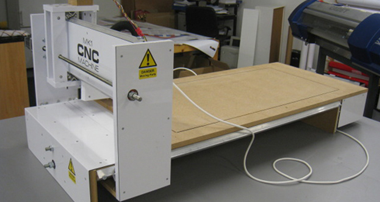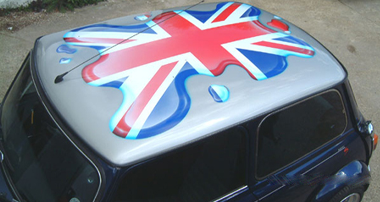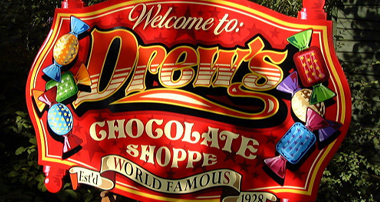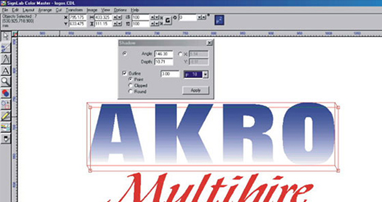How to lay up multiple layers of coloured vinyl.
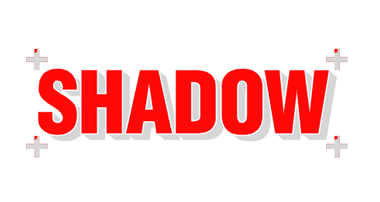
A while back, Tim asked about laying up multi-coloured vinyls…and no, it’s not a basic question – it’s just a question like any other!
What you describe is certainly one way of laying up two or more colours in cut vinyl for the customer to apply ‘in one’. This is a little time-consuming and can still result in misalignment due to pieces moving when you remove the first layer of application tape.
At this point, look at the following sequence:
Say you want to make up the following graphic…
After laying up the design on the screen add four ‘markers’ around it (these can simply be ‘+’ characters entered via the keyboard and moved into place.) Some software programs such as Signlab can create these markers for you.
When you cut the red vinyl, include these four ‘markers’…
Cut the grey shadow including the same four ‘markers’…
and then (whether you’re actually applying the vinyl or just making it up) place one set of ‘markers’ directly over the other for perfect alignment every time…(I’ve curled back the corners of the grey markers to show the red beneath!)
When you’ve finished simply remove the ‘markers’…
This process can be used to align as many colour layers as you like and more importantly it can be demonstrated to customers both quickly and easily enabling them to make up their own multi-coloured vinyl designs saving you time and effort. You can be sure they will achieve a good finish every time without the need for any measuring or additional equipment. Where the colours are bright or contrasting you might like to use paper application tapes. The clear ones have a tendancy to expand and contract in varying temperatures and whilst a signmaker can compensate for this when fitting, the customer may find it impossible to re-align the ‘markers’ if this happens.
One Reason for using this method is that, in future, you may be asked to supply ‘made-up’ vinyl graphics where the colours are on top of each other (like in the image below where our design has an underlying white panel of vinyl). If such items are ‘pre-made’ and applied ‘in one’ then it is likely that air bubbles will occur around the edges of the letters etc. as indicated. This is because as the squeegee passes over the vinyl it ‘skips’ when it hits the raised edges of letters etc. resulting in a less than perfect contact across the entire graphic.
If the customer insists on ‘one-piece’ stickers then either explain the pitfalls to them clearly, increase the cost to cover your build time or ask the members here if one of them


